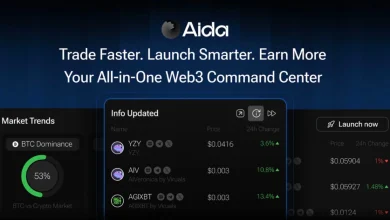
In 2022, there will be over 1.35 million tech startups spread across the globe aiming to lead the next movement of scientists and engineers visioning a brighter future for the world. According to research data from TechJury, over 4.66 billion people are connected to the internet today, with the number growing at a rate of 127 devices every second.
While technology seems to be growing relatively slowly due to being part of the daily change, the rate of progress technologically since the turn of the millennium has been nothing but revolutionary – across energy, medicine, communication, transport, finance, robotics, and many more fields.
Nonetheless, with no one still having set a foot on Mars, nuclear fusion still not providing 100% clean energy, and no flying cars, the technological advancement must continue. Across our team, we have come up with some of the top technological advancements that promise an exciting human life by 2050. From artificially intelligent robots to blockchain-based privacy models to new decentralized gaming worlds, below is a closer look at what the world could look like in the next thirty years.
Artificial Intelligence & Machine Learning joins Blockchain
Top of the futuristic technologies is artificial intelligence (AI) and its subset, Machine Learning (ML). These two technology advancements have been widely advertised across sci-fi films and more recently in the mainstream media platforms. Believe it, the technology offers more than just the hype. In 2021, the global AI and ML fields are valued at $327.5 billion, and it is expected to generate over $500 billion by 2026. While AI technologies are still in infancy, AI technologies are already being widely used in several fields such as speech recognition, home personal assistants, ride-sharing apps, the automotive industry, navigation apps, etc.
In the future, AI technologies could be integrated with blockchain technologies to offer more efficiency, transparency, and privacy to users of AI-enabled technologies. As blockchain becomes more mainstream, AI projects will benefit from the immutable, transparent, and decentralized features the technology offers. In 2021, Oraichain, a blockchain-based AI platform, launched, enabling smart contracts to securely access external AI APIs to enhance the platform. Notably, the platform provides customers access to look up and choose an ever-increasing selection of AI algorithms and models from different providers around the world.
📢📢📢 𝐎𝐑𝐀𝐈𝐂𝐇𝐀𝐈𝐍 – 𝟐𝟎𝟐𝟐 𝐑𝐎𝐀𝐃𝐌𝐀𝐏
🚀 AI Layer 1 with high interoperability
🚀 Scale-up with Layer 2 solution
🚀 Verifiable and Trustless AI execution
🚀 Decentralized Data and AI platform
🚀 Standardized protocols for high applicabilityhttps://t.co/EMa99DBslW pic.twitter.com/6n0f95DFis— Oraichain (@oraichain) January 7, 2022
In the future, the combination of these two technologies will create a market for AI-enabled smart contracts, secure automation of blockchains, and better collection of robotics data.
Decentralized identity systems
While little can be said on how users will be identified in the future, blockchain technology is already changing identity systems today. Less than two decades ago, biometric security systems were not common but today are readily available on our smartphones.
While in decades past, palms and fingers have been scanned for identification, the future could be totally different. By 2050, we could be identified using our DNA footprint or biometric systems that are far better than what is used today such as implanted sensors. As it is with AI and ML technologies, blockchains could also be a crucial part of identification in the future – due to the immutability and security qualities it offers.
Already in production, PhotoChromic is one of the projects aiming to revolutionize data collection and personal identification in the coming decades. The project enables people to securely own and verify their identity and personal information through an NFT. The tokenized NFTs can be programmable, are universally addressable, and open the door for additional functionality.
The next evolution of a Homosapien…is a #PhotoSapien.
— PhotoChromic (@photo_chromic) January 13, 2022
Our journey towards digital self-determination begins, as the HomoSapien takes control over their digital identity:
https://t.co/643akeqfmi
Join our waitlist now – https://t.co/5XrDTgkctg pic.twitter.com/xXWk9WR56j
Additionally, PhotoChromic aggregates biometric proof of life, with government-backed identity verification and unique personal attributes and records them on a blockchain. This data can then be used by any authority or application to verify your identity.
The new world of Entertainment
If you’ve watched Netflix’s TV series, Black Mirror, (spoiler alert) you should be aware of the different futuristic technologies that could evolve our world of entertainment and gaming. For those not familiar with the TV series, it’s a collection of how futuristic technologies could impact our daily lives. By 2050, the entertainment industry includes movies, music, art, photography, and most importantly gaming.
In less than three decades, the gaming industry has moved from simple 2D 32-bit games to realistic games that are both larger in file size and exponentially better graphics. However, these are not the only changes the gaming industry has witnessed, and the next 30 years could further revolutionize the games we play. There’s a new wave to play the games in a more interactive, real, and immersive way that could not be imagined before.
Top of my mind is the explosive growth of virtual reality (VR) and augmented reality (AR) games that are increasingly becoming popular. However, the technology is yet to reach its full potential, but by 2050, it will be common for people to be playing in real virtual worlds straight from their living rooms. Additionally, gaming will also be welcomed as a career across the globe, as games evolve into a play-to-earn structure.
🚀Friday's update is here.🤩
— CryptoTanks (@cryptotanksio) January 21, 2022
You will find it in this link, 2nd part of "Changelog": https://t.co/BPQrY9CsF3
🚀Check out our progress in game server, API server and most importanlty the new designs‼️ pic.twitter.com/n9h9rkh8Pu
The world is already welcoming blockchain-based P2E games such as Axie Infinity, Cryptotanks, and The Sandbox, as they pay the gamers to play. For instance, CryptoTanks is an NFT game that allows the player to enjoy and experience the power of decentralized gaming while enjoying the benefits of crypto, DeFi, and NFTs. While most of these games are still low graphic and exclusively online, in the future more games will adopt the P2E structure to reward their gamers with incentives usable in the real world.
Decentralized finance and community VCs
As the world of technology changes by the day, investing and the world of finance will also need to change to keep up with the rapid developments. Despite the idea having many critics, all of the current financial systems will be digitized by 2050, building on what blockchain technology does today. For instance, decentralized finance (DeFi) has changed the way people all over the globe think about money faster than any other previous financial revolution. DeFi is starting to provide an alternative that could turn the economic landscape on its head and democratize access to finance.
With the financial world becoming more digitized and decentralized, raising capital will also change from the debt and equity structure it is today to a more community-driven approach. One project already pushing this vision is Avalanche-based Colony, a community-driven ecosystem accelerator that provides early-stage funding, liquidity, and investments to projects built on Avalanche.
And so begins the year of #Subnets!🔺
— COLONY 🔺 (@Colonylab) January 21, 2022
One of the first experimental subnets in production is out now. Check out this "digital home" subnet running on #Avalanche where you can store things (anything).
Colony already claimed its space.
Let the #subnetooors start #subnetting!🚀🪐 https://t.co/994QOSecEx pic.twitter.com/yxzLlBCNG2
Unlike the current venture capital (VC) models, Colony sources funds from its community, the community decides what projects the funds will be invested in, and how to allocate the capital. Simply, it’s a decentralized project built by the community, by the community, and for the community.
Final words
For sure, the world of technology will be super-advanced by 2050, so much so that having a correct prediction on what it will look like is almost impossible. From visiting other planets, building flying robots, mining asteroids, anti-aging drugs, flying cars, underground roads, artificial general intelligence on robots, digital financial advancements, etc.
However, as it has been in the past technology has had a tendency of bringing out the best and the worst of humans in equal measure – the hope is that whatever technology will be in 2050 what will define its value to us is how we use it, whether or not we achieve everything explained above.
Disclaimer and Risk Warning
The guest posts featured on Coinpedia are contributed by external authors and reflect their personal opinions and viewpoints. Coinpedia does not endorse, verify, or take responsibility for the accuracy, legality, or reliability of the content, advice, or opinions expressed in these guest posts. Including guest posts does not imply Coinpedia's approval of the content or the author’s views. Readers are encouraged to independently evaluate the information and seek professional advice if necessary before acting on any information provided in the guest posts.








